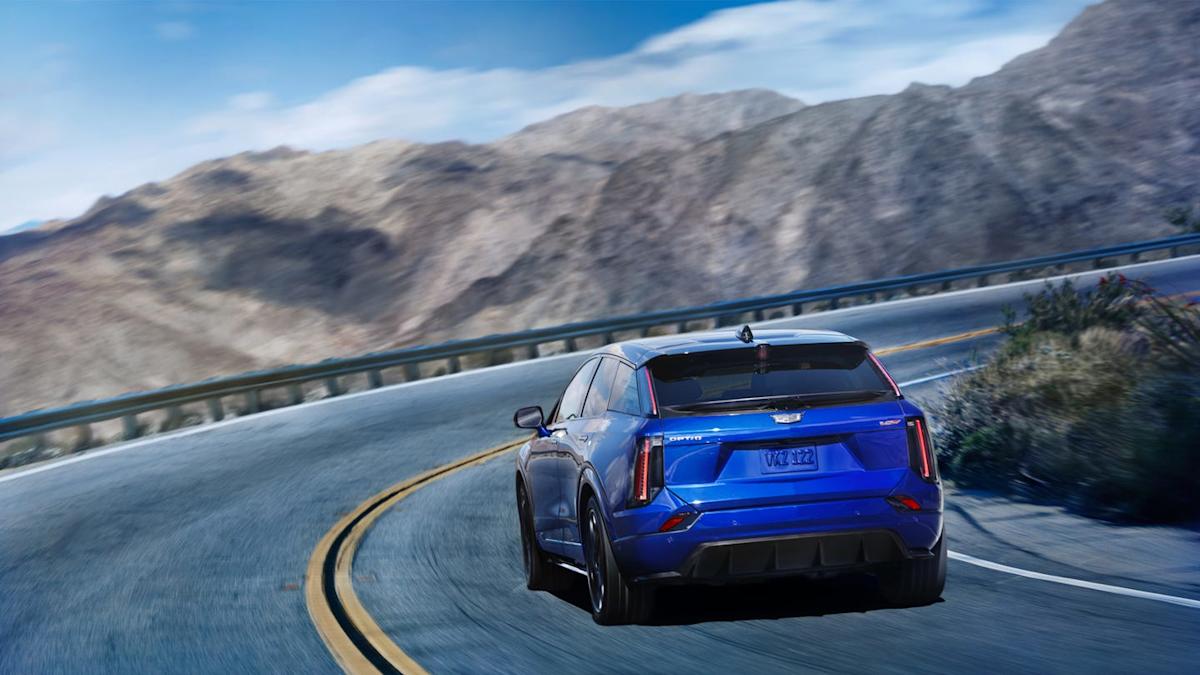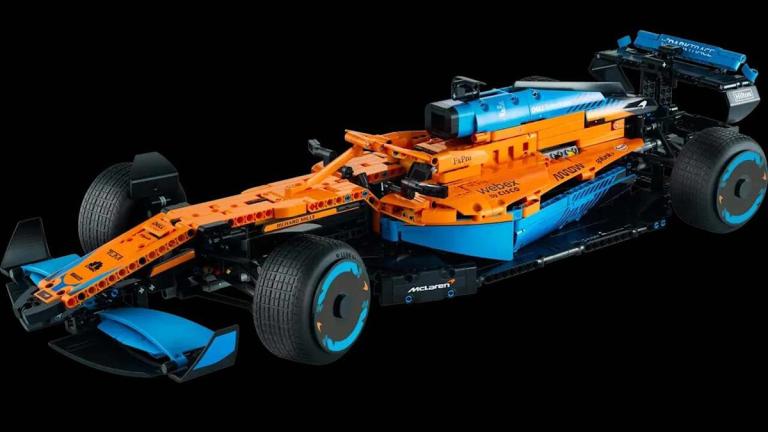
-
CFO Paul Jacobson expects GM’s third-quarter tariff costs to be higher. Management is as confused as anyone about where tariff levels from various countries will land.
-
Cadillac claims to be the number one luxury EV brand and number five in EVs overall (Cadillac Optiq-V pictured above).
-
“We believe our future is in profitable EV products,” CEO Mary Barra said. “This continues to be our north star.”
General Motors took the $1.1 billion tariff hit it expected in the second quarter of the year, CEO Mary Barra and CFO Paul Jacobson said in the automaker’s second-quarter earnings call Tuesday.
The General is well on the way to more than $4 billion in extra cost as predicted three months ago in the first-quarter call with Wall Street analysts.
GM’s adjusted earnings before interest and taxes (EBIT) slid $1.4 billion, to $3 billion from revenues of $47.1 billion and 974,000 wholesale units.
For the first half of the year, GM earned $6.5 billion before interest and taxes, a drop of $1.8 billion.
That’s far better than Chrysler and Fiat parent Stellantis’ first-half loss of $2.7 billion reported Monday, blamed on the Trump tariffs, corporate restructuring, and slow sales, according to the Detroit News.
[Tesla releases earnings followed by a call with analysts Wednesday after markets close, and Ford’s report is a week later, on July 29.]
Jacobson expects GM’s third-quarter tariff costs to be higher. Management is as confused as anyone about where tariff levels from various countries will land.
Meanwhile, GM has committed a $4 billion investment in US factories through 2027 (relying largely on the excess capacity from existing factories that most automakers here have), and GM will continue to import key vehicles from Mexico, Canada, and Korea.
Execs See Strong Growth for ICE, EV
GM’s Korean assembly operations are “very, very efficient,” Barra said, and so will continue to export the Chevrolet Trax and Trailblazer and Buick Envista and Encore GX to the US.
Barra and Jacobson punted on the question of tariffs hitting vehicle window stickers, but they touted GM’s lower-than-average incentives, which means it has some margin in high-priced models to absorb some of the tariff costs of the low-priced imports.
GM says it had strong sales growth from both internal-combustion-powered and electric vehicle sales.
The automaker delivered 1.44 million vehicles in the US in the first half and claims 40% market share of full-size pickup trucks and 60% market share of full-size SUVs, both among the highest profit margin products in the industry.
Overall market share was up 0.7 points, to 17.4%. GM says Chevrolet has secured the number two spot of the overall EV market, with sales up 146% year-over-year for the second quarter, and up 134% for the first half versus the first six months of 2024.
Cadillac claims to be the number one luxury EV brand and number five in EVs overall.
Barra concedes industry EV growth has slowed, but she described a family with a two-car garage in which one is a GM-brand EV and the other is ICE-powered.
In the face of reports that the US market for EVs is slowing—especially as the One Big Beautiful tax and spending bill eliminates virtually all consumer and manufacturer incentives for the coming fiscal year—Barra said GM is committed to bringing down the costs of all its EVs to the point that commodity models as well as luxury models are profitable.
V-8 Engine Investments Continue
GM’s current target is for lighter, more aerodynamic EV architectures to allow smaller batteries.
Jacobson said the flexibility of GM plants such as Fairfax Assembly in Kansas, which will build the ICE Chevy Equinox as well as the next Chevy Bolt EV, gives it a manufacturing advantage over brands such as Tesla as demand for various powertrains ebbs and flows.
“We believe our future is in profitable EV products,” Barra said. “This continues to be our north star.”
But Barra and Jacobson also touted GM’s $900 million investment in its next-generation V-8 engine to be produced in Tonawanda, New York, for its next-generation pickup trucks arriving in the 2027 model year, and for its full-size SUVs.
GM touts a 4% to 6% bump in fuel efficiency for the new V-8s.
Following GM’s reorganization of Chinese operations over the last year, sales ticked up there for the second quarter to 521,000 units, from 454,000 in the first quarter and up 40% year-over-year.
Revenues totaled $6.1 billion for the quarter, up from $4.7 billion in Q2 2024.
GM says about 50% of its deliveries in China (which includes local brands Wuling and Baojun, as well as Buick, Cadillac, and Chevy) are “new energy vehicles,” including hybrids and electrics.
Do you think General Motors will benefit long-term from its heavy commitment to battery-electric vehicles? Please comment below.



:quality(90)/p7i.vogel.de/wcms/50/fb/50fbcd4779f4df743c2d31c6442a23ed/0127517622v1.jpeg?w=768&resize=768,0&ssl=1)
